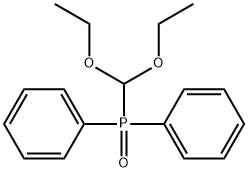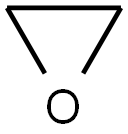Dioctyltin oxide
Synonym(s):Dioctyloxostannane;Dioctyltin oxide
- CAS NO.:870-08-6
- Empirical Formula: C16H34OSn
- Molecular Weight: 361.15
- MDL number: MFCD00013839
- EINECS: 212-791-1
- SAFETY DATA SHEET (SDS)
- Update Date: 2024-12-18 14:08:57

What is Dioctyltin oxide?
Chemical properties
white to almost white crystalline powder. It is practically insoluble in water but soluble in organic solvents.
The Uses of Dioctyltin oxide
Dioctyltin oxide is used as a stabilizer and as a widely applicable catalyst, especially for esterification reactions, transesterification reactions and condensation reactions. It is slightly less reactive than dibutyltin oxide, but is not subject to as many regulatory restrictions, which is why it is increasingly used. Dioctyloxotin can also be used in various chemical synthesis such as in preparation of trinuclear seven-coordinated tin complexes, having possible antioxidant, and anti-inflammatory activity.
What are the applications of Application
Amorphous white solid available in various particle sizes with several uses:
widespread use in the aqueous cathodic electrodeposition of urethane coatings for automotive and industrial applications
active transesterification catalyst for methacrylate esters that are used in the water treatment market
high temperature transesterification reactions for the production of coating resins and specialty monomeric esters
intermediate for heat stabilizers
Flammability and Explosibility
Non flammable
Safety Profile
Moderately toxic by ingestion. When heated to decomposition it emits acrid smoke and irritating fumes. See also TIN COMPOUNDS.
Properties of Dioctyltin oxide
| Melting point: | 245-248°C (dec.) |
| Density | 1,3 g/cm3 |
| vapor pressure | <0.01 hPa (20 °C) |
| Flash point: | 70°C |
| storage temp. | Store below +30°C. |
| solubility | Toluene (Slightly) |
| form | Powder |
| color | White |
| Specific Gravity | 1.30 |
| Water Solubility | Insoluble |
| Boiling point: | 230°C (1013 hPa) |
| Exposure limits | ACGIH: TWA 0.1 mg/m3; STEL 0.2 mg/m3 (Skin) NIOSH: IDLH 25 mg/m3; TWA 0.1 mg/m3 |
| CAS DataBase Reference | 870-08-6(CAS DataBase Reference) |
| EPA Substance Registry System | Stannane, dioctyloxo- (870-08-6) |
Safety information for Dioctyltin oxide
| Signal word | Warning |
| Pictogram(s) |
 Exclamation Mark Irritant GHS07 |
| GHS Hazard Statements |
H413:Hazardous to the aquatic environment, long-term hazard |
| Precautionary Statement Codes |
P273:Avoid release to the environment. P501:Dispose of contents/container to..… |
Computed Descriptors for Dioctyltin oxide
New Products
Tert-butyl bis(2-chloroethyl)carbamate (S)-3-Aminobutanenitrile hydrochloride N-Boc-D-alaninol N-BOC-D/L-ALANINOL N-octanoyl benzotriazole 4-Hydrazinobenzoic acid 3,4-Dibenzyloxybenzaldehyde 1,1’-CARBONYLDIIMIDAZOLE R-2-BENZYLOXY PROPIONIC ACID 1,1’-CARBONYLDI (1,2-4 TRIAZOLE) 4-HYDROXY BENZYL ALCOHOL 3-NITRO-2-METHYL ANILINE (2-Hydroxyphenyl)acetonitrile 4-Bromopyrazole 5-BROMO-2CYANO PYRIDINE 5,6-Dimethoxyindanone 5-broMo-2-chloro-N-cyclopentylpyriMidin-4-aMine 4-methoxy-3,5-dinitropyridine 2-(Cyanocyclohexyl)acetic acid 2-aminopropyl benzoate hydrochloride 1-(4-(aminomethyl)benzyl)urea hydrochloride tert-butyl 4- (ureidomethyl)benzylcarbamate diethyl 2-(2-((tertbutoxycarbonyl)amino) ethyl)malonate Ethyl-2-chloro((4-methoxyphenyl)hydrazono)acetateRelated products of tetrahydrofuran








You may like
-
 Di-n-octyltin Oxide CAS 870-08-6View Details
Di-n-octyltin Oxide CAS 870-08-6View Details
870-08-6 -
 Dioctyltin oxide, 97% CAS 870-08-6View Details
Dioctyltin oxide, 97% CAS 870-08-6View Details
870-08-6 -
 Di Octyl Tin Oxide(Doto) CASView Details
Di Octyl Tin Oxide(Doto) CASView Details -
 Dioctyltin oxide CAS 870-08-6View Details
Dioctyltin oxide CAS 870-08-6View Details
870-08-6 -
 DIOCTYLOXOTIN CAS 870-08-6View Details
DIOCTYLOXOTIN CAS 870-08-6View Details
870-08-6 -
 Di-n-octyltin oxide CAS 870-08-6View Details
Di-n-octyltin oxide CAS 870-08-6View Details
870-08-6 -
 N-Vinylformamide 99%View Details
N-Vinylformamide 99%View Details
13162-05-5 -
 2-ETHYLPYRIDINE 100-71-0 99%View Details
2-ETHYLPYRIDINE 100-71-0 99%View Details
100-71-0